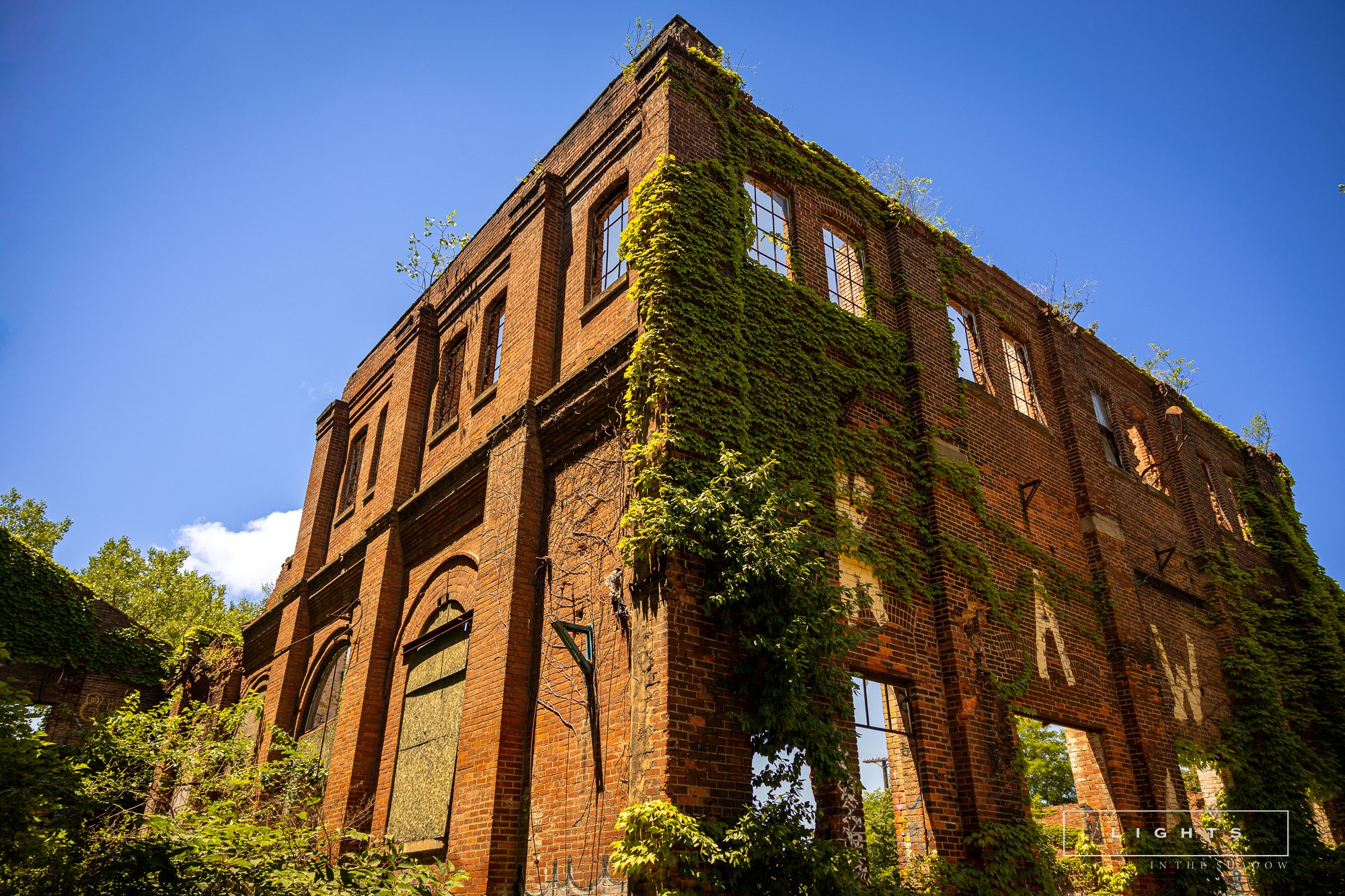The Rust Belt
The Rust Belt is a region in the northeastern and midwestern United States that experienced significant economic decline due to the collapse of the manufacturing industry, particularly steel and automobiles, during the late 20th century. This decline was exacerbated by white flight, where predominantly white populations moved from urban centers to suburban areas in search of better living conditions and schools. These population shifts were often driven by racial tensions and the desegregation of schools. As industries closed and residents left, cities faced shrinking tax bases, leading to the abandonment and deterioration of public facilities, most notably public schools, which became underfunded and underutilized, further entrenching socio-economic disparities in the region.
Horace Mann High School
A Tudor-style school that opened in 1928, and featured two science labs and a pond where students could ice skate and fish. The school was considered a model for schools across the country when it opened. By 2003, enrollment was down to just 546 students, and the school was slated for closure. [ additional history ]
June 19, 2024 – Gary, Indiana
City Church
Opened in 1906 as City Methodist Church; and in the 1960s and 70s, the church lost large numbers of parishioners to white flight as Gary's social makeup altered and better-off inhabitants moved away. By 1973, there were only 320 members in the then-aging congregation, about a third of whom regularly attended. After attempts to sell the building to another congregation proved fruitless, the decision was eventually taken to close the church in 1975. [ additional history ]
June 19, 2024 – Gary, Indiana
Emerson High School
The school was opened in 1909 and included an auditorium, gymnasium, pool, and even a zoo. In 1927, eighteen African American students were transferred into the school due to overcrowding at the Virginia Street School, which resulted in the four day Emerson School Strike on September 26. The school closed in 1981 and reopened in 1998, however it closed again in 2008 due to a lack of funds and the building’s condition. [ additional history ]
June 19, 2024 – Gary, Indiana
Central High School “Yeatman”
In 1931, enrollment at the new Central High School consisted of more than 1,500 students. In January 1955, the school began accepting black students for the first time which resulted in student attendance boycotts. As white families moved away in the 1970s, violence broke out between remaining white students and increasing numbers of black students. By 1980, the school's population was 95 percent black. The “Yeatman” campus closed in 2004 and the Central High School name moved to another location.
[ additional history ]
June 21, 2024 – St Louis, Missouri
The Majestic Theater
Built in 1928, the theater replaced a 1907 theater which had burned down. The Spanish Gothic theater was designed by the Boller Brothers, who were nationally prominent theater architects. It was the first theater in the city with modern air conditioning. The theater closed in 1960 and was added to the National Register of Historic Places in 1985.
[ additional history ]
June 22, 2024 – East St Louis, Illinois
Spivey Building
This 12-story skyscraper was built in 1927 by newspaper owner Allen Spivey and is the tallest building in East St Louis. In the 1950s the building was the office building for East St Louis’ most prominent professionals. The last tenant in the building vacated around 1980 and the building has been vacant ever since. In 2002 it was added to the National Register of Historic Places. [ additional history ]
June 22, 2024 – East St Louis, Illinois
First German Reformed Church
Despite the recent economic booms and gentrifications of Cincinnati, there are still parts of the city in decay and abandonment. The First German Reformed Church, built in 1850 is an example. Several attempts to rehabilitate the old church as a new business in the neighborhood have been tried, but nothing yet has come to fruition in part due to the significant expense to make the necessary repairs to the building itself.
[ additional history ]
June 24, 2024 – Cincinnati, Ohio
Flint Central High School
Originally built in 1923 and had a peak attendance of approximately 2,000 students, Flint Central High School closed in 2009 due to a dwindling number of students and extreme costs to repair the structure. The school had extensive athletics and theater programs.
[ additional history ]
June 26, 2024 – Flint, Michigan
Westinghouse Factory
Built in the late 1800’s for the Walker Manufacturing Corporation, the building was eventually surrendered to the Westinghouse Electric Corp in 1898 after Walker lost a patent lawsuit with Westinghouse. The building closed in the 1990s and the site sits abandoned with no plans for redevelopment.
[ additional history ]
June 27, 2024 – Cleveland, Ohio
The Arcade
Not all old buildings in the rust belt have suffered the same fate. Some historic locations, such as The Arcade, in downtown Cleveland have been reclaimed. Originally built in 1890 and considered one of the first indoor shopping malls, today The Arcade has been converted into a full service hotel on the top three floors and retail spaces on the lower two floors.
[ additional history ]
June 2, 2024 – Place
Molly Stark Sanatorium
The hospital opened 1929, and was named for Molly Stark, wife of John Stark, namesake of the county. Albert Thayer of New Castle Pennsylvania designed the hospital in the Spanish Revival style, and primarily treated patients with Tuberculosis. It finally closed in 1995 and was was purchased by Stark Parks. the building now sits on a county operated park.
[ additional history ]
June 28, 2024 – Louisville OH













































































